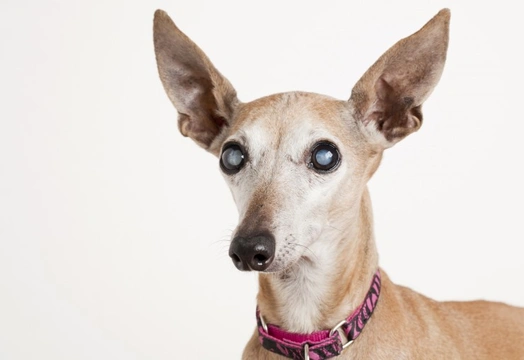
The work of the Canine Eye Registration Foundation
The Canine Eye Registration Foundation or “CERF” helps dog owners and breeders to identify a potential predisposition to hereditary eye conditions in their potential parent dogs, so that breeders can make an informed decision on whether or not to breed from their dogs.
Having information on the potential to eye problems within their prospective breed lines enables breeders to avoid breeding from dogs that have been identified to have a predisposition to problems, and means that they can go some way to ensuring that their subsequent litters have healthy eyes. Over time, this means that breeds and types of dogs that are widely known to be prone to testable eye problems will produce progressively less and less afflicted dogs in the future, contributing to the wider health and improvement of the breed as a whole.
In this article, we will look at the work of the Canine Eye Registration Foundation in more detail. Read on to learn more.
What can CERF do for dog owners and breeders?
CERF is located in the USA, where test results and data is collated from all across the world, and many countries work with CERF in terms of enabling eye tests and collating the results for individual dogs and breeds as a whole.
The main roles that CERF undertakes include:
- Maintaining an accessible registry of purebred dogs that have been tested and certified as clear of hereditary eye conditions.
- Offering membership of the organisation, which includes a regularly published newsletter on research and advances in canine eye testing and treatments.
- Reporting and publishing data on breed-specific eye conditions, including advances and updates on breed lines as a whole.
- Providing a central source of information for veterinary professionals, breeders and dog owners who wish to learn more about canine eye conditions, advances, and testing procedures.
- Offering and certifying canine eye testing schemes all over the world (including within the UK) in order to allow potential breeders to assess the eye health of their breed lines.
What are CERF’s aims and goals?
CERF’s main purpose is to contribute to the eventual elimination of hereditary eye conditions in purebred dogs, by enabling research and testing of hereditary eye conditions, and encouraging dog breeders and potential puppy buyers to breed and buy only dogs with good, healthy eyes.
The foundation was set up by a group of dog breeders and owners who were concerned about the prevalence of certain hereditary eye conditions within purebred breed lines, in conjunction with various board-certified veterinary ophthalmologists and testing centres.
Ultimately, this led to a national registry within the USA of canine eye health, and later, an international database too.
The CERF registry collates data on dogs that have tested and been certified as free of hereditary eye conditions, and also collates data on all tests performed, including tests that yield poor eye health results. This information forms the basis of the database that not only allows people to search for dogs with excellent eye health, but also to map patterns, changes and progress in eliminating hereditary eye diseases as a whole.
This database is an important tool for a wide variety of canine professionals, including dog breeders, potential owners, veterinary surgeons, veterinary ophthalmologists, and breed clubs and organisations.
How does eye testing work?
Any dog that requires testing will be examined by a CERF-affiliated professional, who will then complete a testing form indicating the general health of the eye, and if any hereditary flaws were identified. Advice is then offered to potential breeders, based on guidelines on the management of eye conditions and recommendations on whether or not breeding should go ahead.
The results and recommendations of testing are not binding, and do not legally prevent a breeder from breeding from a dog that scores badly, however, it is highly unlikely that a breeder would go to the expense of testing if they are not prepared to follow the recommendations achieved as a result of testing.
The results of a successful certification are valid for one year, after which the dog will need to be re-tested again if the breeder wishes to retain an up-to-date picture of their health.
All results of testing, good and bad, are retained as part of CERF’s database to help with future research into canine eye problems.
CERF and DNA testing
DNA testing forms part of the CERF examination process, and this is of course vital in terms of recording information on specific breeds, breed lines and individual dogs, and their predisposition to problems. Identifiable information on specific individual dogs is not made publically available or collated by name, but as a whole, all of the information collated from each dog of every tested breed forms part of the CERF’s wider database on progress into eradicating hereditary eye problems, and in information on eye health by breed.



